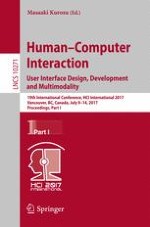2017 | OriginalPaper | Chapter
Enough or Too Much in EMR Training and Education?
Authors : Joshua Tabner, Fan Zhao, Nick Pavel, Kevin Kincaid, Connor Murphy
Published in: Human-Computer Interaction. User Interface Design, Development and Multimodality
Publisher: Springer International Publishing
Activate our intelligent search to find suitable subject content or patents.
Select sections of text to find matching patents with Artificial Intelligence. powered by
Select sections of text to find additional relevant content using AI-assisted search. powered by
